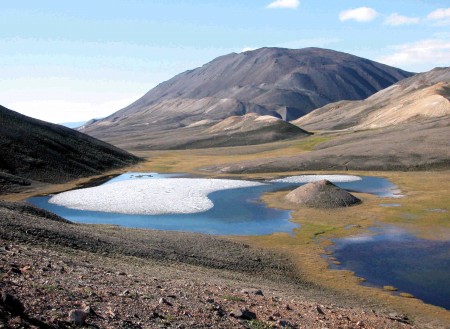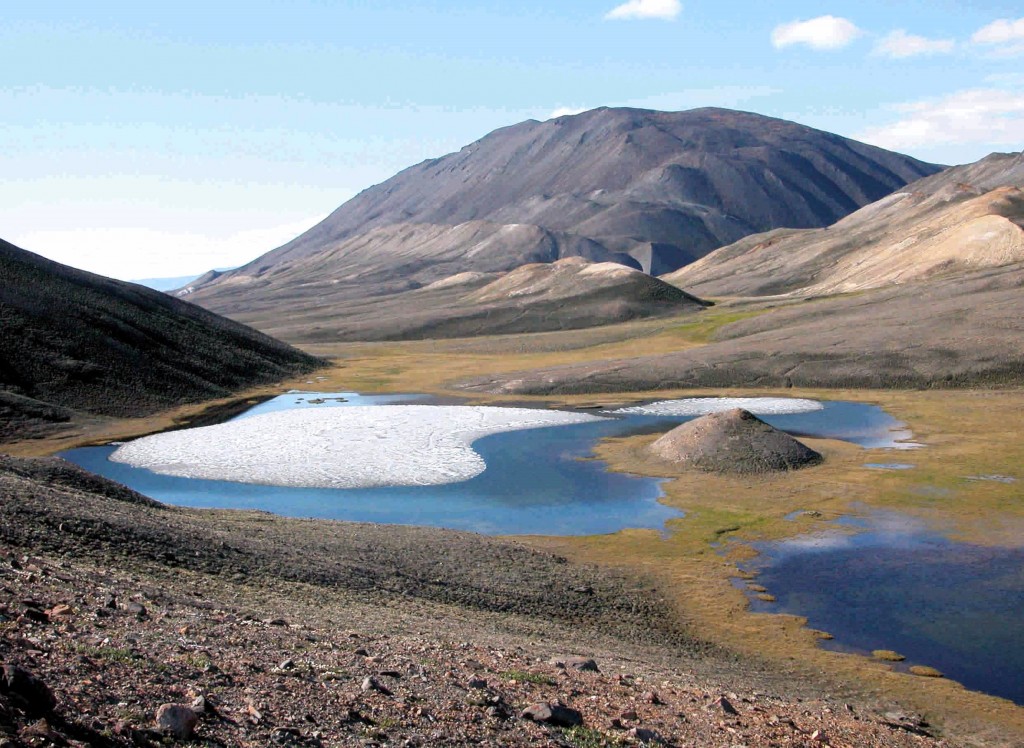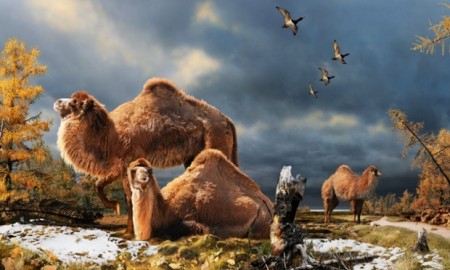April 11, 2015 – The picture below is of summer on Ellesmere Island in Canada’s far north. Here ice even in the mid-summer period still can be found floating on inland lakes. But Ellesmere has a past that is far different from what you see here.
Back in the Pliocene, between 3.6 and 2.2 million years ago, Ellesmere featured summers with temperatures considerably warmer (around 15 Celsius, 60 Fahrenheit) and as a result a very different landscape filled with forests and a wide range of animal species we associate with much warmer climes.
Ellesmere was home to camels and beaver. We know this because we have found fossil evidence on the island in proximity to an ancient beaver pond. The camel, originated from the Americas, so it is not surprising to find fossils of the species in the Western Hemisphere. But to find it in this area of the High Arctic suggests a world far different from the one we see today. How did camels get to Ellesmere Island? How could they thrive in a place subject to almost 6 full months of darkness every year? And for that matter, how did forests and the rich mix of other plants and animals survive in a place so close to the North Pole?
That’s where paleoclimatologists, geologists, paleontologists, geochemists, oceanographers and others who study Earth history come in. And it is what they have discovered that relates to our present global warming challenge.
The world of the mid-Pliocene was much warmer than today. We know this because we can sample the atmosphere from the past and study the fossilized remains of plant and animal life found on Ellesmere. We can also study ocean sediment cores to both measure changes to the temperature and composition of the mid-Pliocene ocean, as well as to the microbiology within the ocean. CO2 and nitrogen are keys to unlocking the world of the mid-Pliocene. Nitrogen isotopic records show how throughout the period changes occurred to the nutrient cycle indicating changes in ocean circulation and biological productivity. Meanwhile sedimentary cores taken from a Siberian lake north of the Arctic Circle shows that mid-Pliocene atmospheric CO2 measured between 380 and 450 parts per million. Those same cores contain fossil pollens from five different kinds of pine trees as well as numerous other plants we don’t find in today’s Arctic.
The picture that is emerging in the mid-Pliocene is one of a nearly ice-free Arctic (we’re not sure if seasonal ice appeared during the winter months). This warmer Arctic saw the spread of forests and forest biology to the far reaches of the north. All of this facilitated by atmospheric CO2 and changes to ocean circulation.
What would have caused changes in ocean circulation? It appears that the Pliocene ocean, much warmer than today’s oceans, experienced intensified heat circulation from tropical latitudes to the north. The Gulf Stream and North Atlantic Current experienced enhanced heat transport pushing warm water further to the north. Similar heating in the Pacific impacted the areas as far north as the Bering Sea.
It seems like science fiction to think of Ellesmere being a place where camels and beaver roamed (see picture below). But as we have noted in past blog postings, the northern pole of our planet seems to be the place where global warming is exerting significant change before we notice it elsewhere. Look at where we are seeing the greatest changes to median temperatures over the last fifty years. It is in the Arctic. And what it also tells us is that climate change has different regional impacts on our planet.












